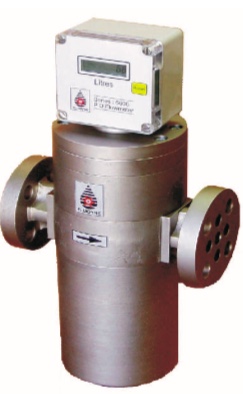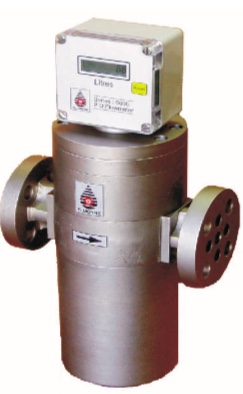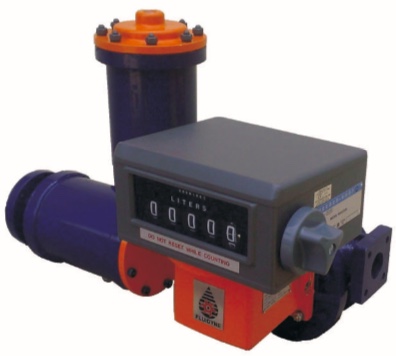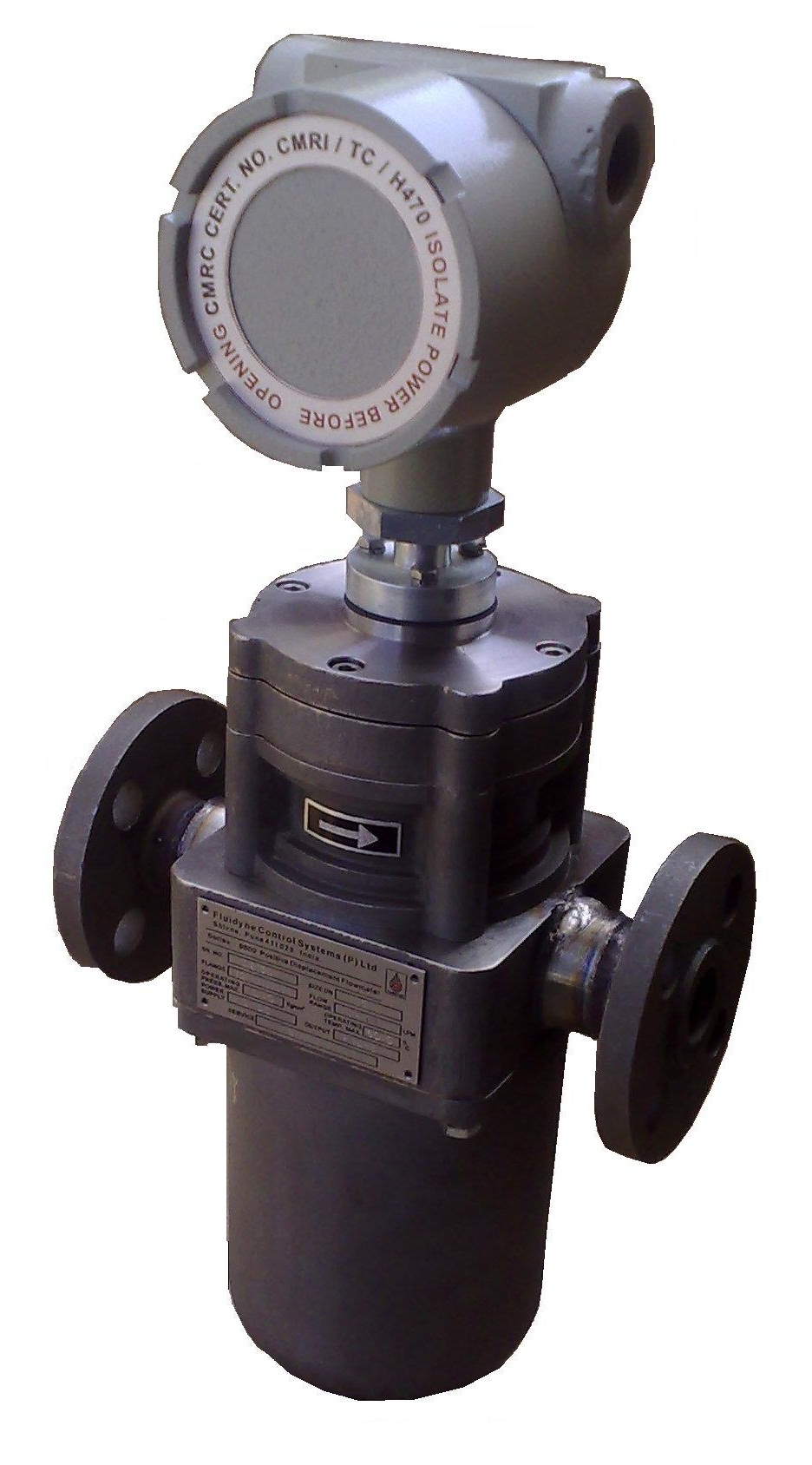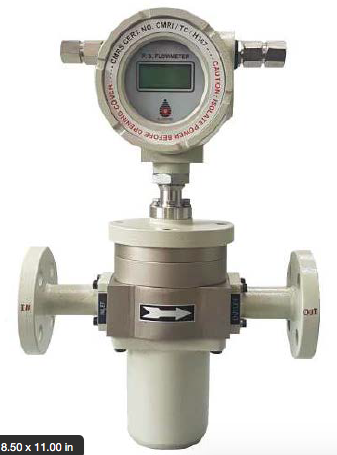Oscillating Piston Flow Meter
Suppose you are working on an application where you need to measure the flow of a liquid that has a high viscosity. In that case, an oscillating piston flowmeter is what you should consider installing.
The oscillating piston flowmeters are a sort of positive displacement flowmeter and often referred to as volumetric counters. They are flowmeters especially suited for measuring high viscosity liquids. However, they are also most suited for liquids with a low viscosity.
The Configuration of Oscillating Piston Flow meter
The flow meter is one of the oldest types of positive displacement flow meters. This oscillating piston meter is mainly similar to a nutating disc meter. Except that its measurement device is one split ring/ piston that only oscillates within a single plane and this makes it more easy to maintain and durable than any other PD meter.
Oscillating piston flow meters utilize a precision-machined chamber that contains a cylindrical piston. Liquid enters the precision-machined chamber containing an oscillating (rotating) piston. The piston is positioned to divide the chamber into compartments that hold a pre-measured exact volume. Liquid pressure propels the piston to start oscillating and rotate on its axis. The meter's operation itself is based on the movement of this rotating piston. It fills and empties a chamber of a known volume with each turn, i.e. this piston oscillates as the liquid flows.
It also has a central shaft that is constrained to run in a circular groove inside the chamber. The movement has a concentric motion about the centre chamber axis. This results in an off-centre rotating motion because the liquid sequentially enters and exits compartments shaped into the underside of this piston. Since the capacity of the compartments is already known, the volume of liquid metered per revolution is easy to calculate accurately.
The precision-machined chamber has a slotted cylinder that separates the inlet and outlet part. Center piston rotate as the liquid subsequently enters and exit from the chamber. Usually, a hydraulically floating piston does not come into contact with the chamber.
The rotation of this piston activates a reed sensor. It then emits a pulse that corresponds with the volume of this chamber. The output signal from this sensor can be used through an electronic converter.
Fluidyne's oscillating piston flowmeter series is manufactured using different materials and has varying process connections. These connections include materials and fittings for hygienic applications. We also offer unique designs for high-pressure applications.
When there is no flow inside the pipe, the piston stays stationary. When the liquid begins flowing, the piston displaces liquid from the inlet to the outlet with a constant cyclic volume per position.
The movements inside the piston's central hub are sensed through the flow meter's wall by a follower magnet. Every revolution of the piston hub is equal to a fixed volume of the fluid. This is indicated as flow by an indicator or totalizer.
Close margins between the piston and the chamber guarantee minimum liquid slippage for highly reliable and repeatable flow measurement for every volume cycle.
Benefits:
- The installation can occur in both horizontal and vertical positions. It can even be set at an inclination. It offers bidirectional flow measurement and is ideal for all flow directions without it affecting the flowmeter accuracy.
- Straight pipe lengths before and after the flowmeter is not necessary at all. The meter can be installed before or after adjusting elements of the flow.
- Complete Stainless Steel 304 grade construction to ensure reliability in harsh operating conditions
- The Rotary piston flow meter is not particularly sensitive to differences in viscosity. So it is suitable for applications where the temperature might not always be constant.
- Rotary piston flow meter is also not sensitive to changes in pipe flow rates. A turndown of 20:1 is also taken by the meter very well and accuracy does not suffer.
- Under standard working conditions, it exhibits a long working life. It will not be necessary to regularly replace any part, but if needed, the replacement operation is easy, and it can be done within a few minutes.
But what conditions are considered to be "normal working conditions"?
At Fluidyne, we believe that the duration of the components depends essentially on the combination of these two factors:
- The abrasive qualities of the application product (this must be compatible with the manufacturing material of the flow meter).
- The operating flow rate. In case the maximum flow of the instrument is surpassed, the rotating piston might end up damaged.
Application:
- The rotary piston flow meter accommodates several viscous fluids (paint, resin, ink). The meter can be utilized for oil metering where the turn down is not critical. It can be used inside an automatic liquid batching system.
- The best use of a rotary piston flow meter is in clean liquids like white oils. Petrol, Diesel and kerosene offer excellent lubricating characteristics which is perfect for oscillating piston flowmeter.
- They are highly suitable for food and beverage applications like honey or chocolate.
- The meters are applicable during all types of industrial processes. Oscillating piston flowmeters are widely utilized in the chemical and petrochemical industries.
- They are used for tank filling and batching applications, measurement of steam condensates in boilers, and fuel consumption measurement, among many others.
The Rotary piston flow meter by Fluidyne is perfect for any type of liquid application. They display excellent performance in changing process conditions. With an accuracy of ±0.2% of the measured value, the meters offer high feasibility of total cleaning and allow for easy sterilization. The best advantage of rotary piston flow meter is that the volume is directly measured and not inferred as in the case of inferential flow principles. Thus, it is the most accurate flow measurement principle in the world.
Features
Fluidyne offers a balanced, lightweight, and rugged construction. The flanged connectors make it the best option for overhead hose reels and other liquid applications.
- Unbeatable repeatability of better than ±0.1% of reading
- High accuracy of ±0.2% of reading
- It can be installed anywhere without straight length constraints
- Ideal for numerous applications.
Additional Information:
- It is an "end of hose" meter. The meters are highly durable for both indoor and outdoor applications.
- Advanced microprocessing technology allows for electronic field recalibration.
Are you considering getting an oscillating piston flowmeter for any application and have doubts? Fluidyne can help you to decide which is the best option for you!
Frequently Asked Questions
1. What is a rotary piston flow meter and how does it work?
Rotary Piston flow meter is a type of Positive Displacement flowmeter which uses the revolution of a piston to directly measure smaller packets of liquid volumes. With each revolution, a known cyclic volume of liquid is displaced from inlet to outlet and the total revolutions are summed up to know the total volume of liquid measured.
2. What's the use of an oscillating piston?
A piston is any cylindrical 3D object made from corrosion and reaction resistant material. The piston is constructed in a way that due to liquid pressure in the line, the piston oscillates in the measurement chamber and accurately measures small segments of total volume of liquid. An oscillating piston must be made of light materials to enable easy revolution and low inertia.
3. How is flow rate calculated?
In an oscillating piston flow meter, the total volume is measured by revolutions of the piston and instantaneously the amount of time taken for one revolution is recorded. Based on this, the total volume is divided by time taken and is averaged across the entire flow providing both instantaneous flow rate as well as average flow rate.
4. What is an oscillating cylinder piston mechanism?
The oscillating piston mechanism is used for volumetric flow measurement. The oscillating piston mechanism comprises a measurement chamber and a piston made from a lightweight material which is inert to most media. Upon flow of liquid in the line, the piston oscillates in a circular locus while measuring volume in every revolution. The piston MOC also has to be compatible with the MOC of the flowmeter body as a soft-hard combination or they will abrade in time.
